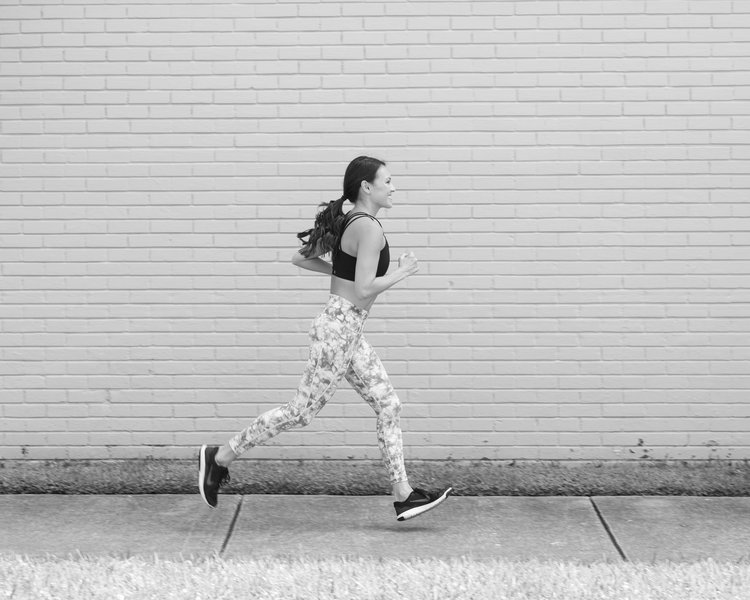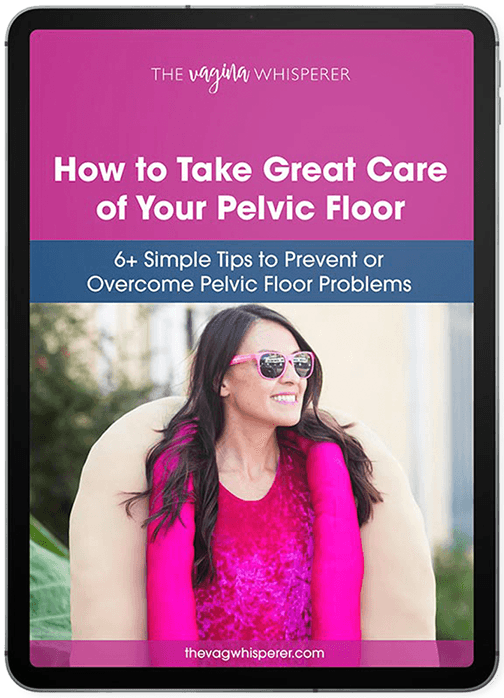Historically, there has been a lack of guidelines for healthcare providers to help patients with a goal to return to running postpartum.
In March of 2019, three physiotherapists in the UK published the first such guidelines. This is excellent news!
It links pelvic health signs/symptoms to the musculoskeletal and mechanical components of running to currently available pelvic health research outcomes in order to create individualized running programming for postpartum clients.
The importance of easing back into running postpartum
Whether the goal is a casual three mile jog or a competitive marathon, it is important for the health of the pelvic floor and pelvic organs to re-introduce running safely and gradually.
After having a baby, the abdominal wall and pelvic floor tissues are stretched, weak, and may be injured. High impact activities dramatically increase intra-abdominal pressure and muscular demand on the pelvic floor.
An inappropriate return to high impact sports, such as running, can contribute to pelvic organ prolapse, urinary incontinence, sexual dysfunction, and pain conditions.
Your postpartum return to running may take time.
Regardless of prior physical condition or type of birth, the first step is to allow time for your tissues to heal with a period of relative rest.
Having the “all clear” at your 6-week checkup means that there is no sign of a condition or issue requiring medical intervention by the physician.
It does NOT mean that your tissues are done healing or that they are ready for high impact. The first three months postpartum are a time for rest, breathwork, walking, attention to body mechanics and posture, and low impact exercises rebuilding your connection to your core.
This is a valuable time to get pelvic physical therapy care, even if you feel symptom-free, to treat and prevent issues and set a foundation for getting back to all of your desired activities.
Key research takeaways for returning to running after having a baby
Reading dense scientific studies is not how most mothers with a newborn want to spend their time. So, here is a summation of what the latest research says:
Seeking Professional Care
- All postnatal persons can benefit from a specialized pelvic health evaluation within the first six weeks, for prevention and management of pelvic organ prolapse, urinary incontinence, and sexual dysfunction (this is backed by the highest quality of current evidence).
When To Reintroduce Running Postpartum
- Wait at least three months before you return to running.
- Graded return to running is acceptable starting 3-6 months postpartum as long as signs and symptoms of pelvic floor dysfunction are not present.
How to Reintroduce Running Postpartum
- Gradually return to running by starting with walking and running intervals.
- Increase volume before intensity – that means increase distance and frequency before speed and terrain challenges.
- Remember that cross-training recovery strategies and sleep are important for maximizing success.
Red flags to watch for
Your pelvic health physical therapist can assess for the presence of pelvic floor dysfunction, but knowledge is power. Here are a few signs, symptoms, and risk factors to be aware of when returning to running postpartum:
Signals and Symptoms of Pelvic Floor Dysfunction
- Leaking urine or feces
- Difficulty pooping
- Painful intercourse
- Pelvic and/or low back pain
- Heaviness, pressure, or bulging in the low pelvis
Additional Risk Factors of Pelvic Floor Dysfunction
- Breastfeeding
- Obesity
- Scar (cesarean or perineal)
- Pre-existing pelvic floor issues
- Pre-existing hyper-mobility condition
- Postpartum depression
We encourage you to work with a professional pelvic floor physical therapist who can you to develop a plan so that you can meet your running goals. Knowing how you are healing postpartum, and knowing what to do for your specific needs, is powerful. Being able to balance risk and reward towards your goals wisely is powerful.
As more pelvic health research is conducted and outcomes are gathered, guidelines will be updated and expanded so that healthcare providers have the highest quality information for developing postpartum programming. The best part – these current guidelines are FREE for all to access.
______________________________________________________________________________________________________
Are you currently pregnant or planning to conceive? If so, make sure to download my FREE resource — How to Prepare Your Pelvic Floor & Core for Childbirth + 8 Must-Dos for C-Section and Vaginal Deliveries.
______________________________________________________________________________________________________
Some links may be affiliate links. The products we recommend are products we use or recommend to clients.





